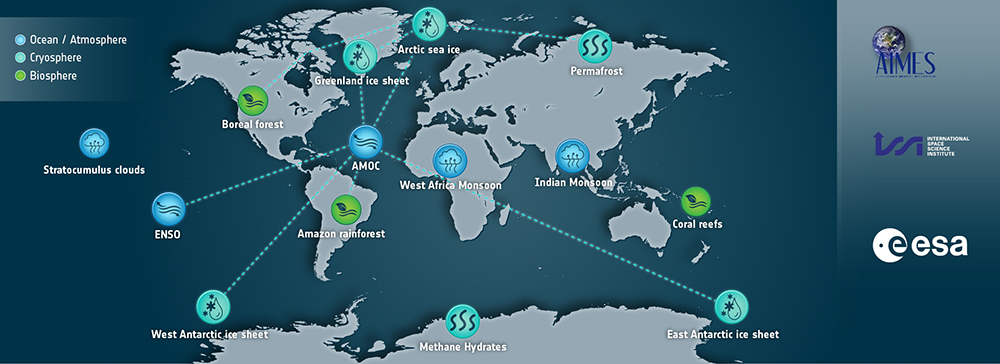Research Questions To Drive The Agenda
- Satellite observation requirements for monitoring tipping elements in the Earth System, perturbing factors, and interactions.
- Processing the data to show proximity to thresholds in the system.
- Development of risk (and resilience) indicators, grouped by sphere into cryosphere, ocean and biosphere – and their interactions, and how they link into social responses and social tipping point risks.
- For biosphere: recommendations for ecological indicators of abrupt change and response to disturbance: observation requirements by region/variable/resolutions to observe greening/browning, fire response, vegetation-atmosphere interactions, and drivers of extinction.
- Cryosphere: prioritisation and recommendations for indicators of abrupt change and the inclusion of cascading impacts in models.
- Ocean: critical needs for observation of circulation changes, tipping points relating to ocean-atmosphere fluxes, clouds, and their cascading impacts: for example on hypopoxy and CH4 release.
- System responses to human activity – recommendations for monitoring of tipping elements relating due to land and ocean management.
- Recommendations for improving our understanding of uncertainties and risk relating to remote sensing of tipping elements, and model-data integration.
- Improving our understanding of inter-connectedness of climate and human systems.
- Recommendations for how to use Artificial Intelligence and Machine Learning for detecting tipping thresholds and ‘flickering’ in remote sensing data.
- Research strategies for monitoring unobservable tipping elements through by defining emergent constraints.
- Defining model-data integration requirements, processing and infrastructure.
